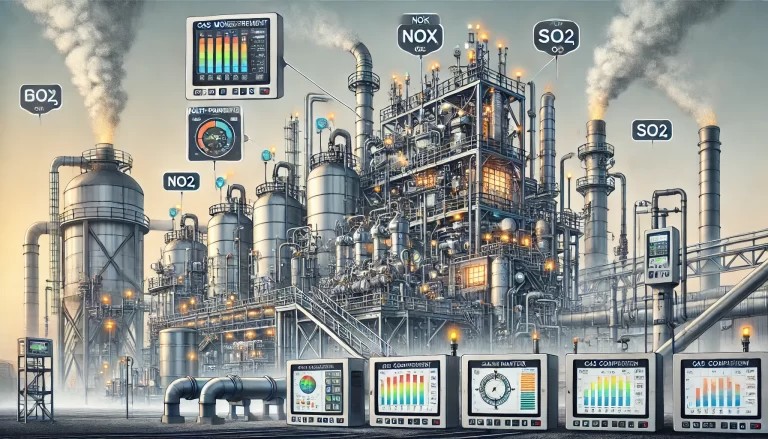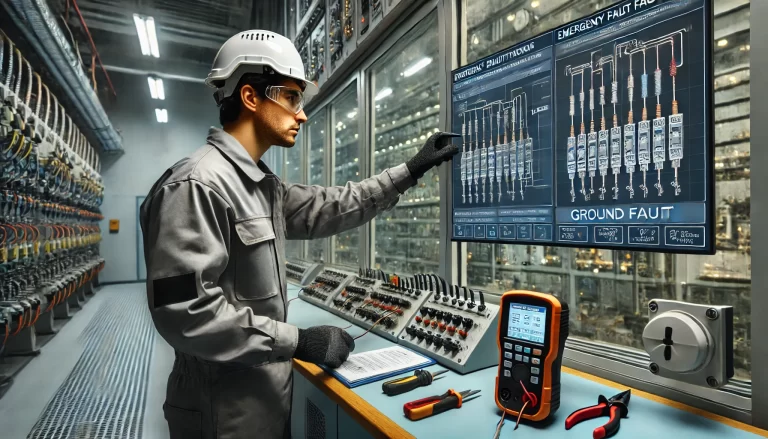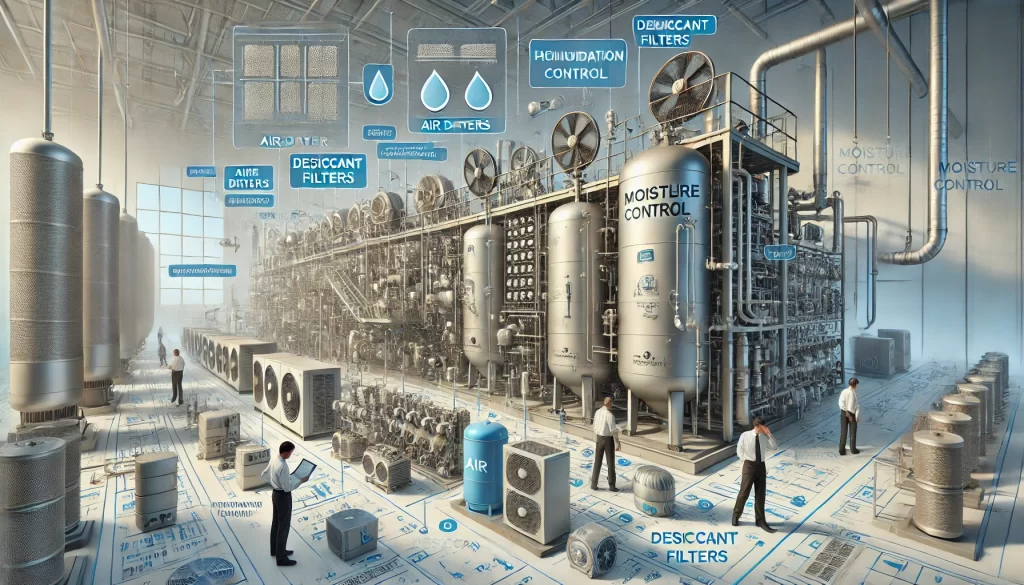A comprehensive guide for instrumentation professionals and engineers
Introduction
Instrumentation terminology is foundational in process automation, instrumentation engineering, and industrial control systems. These terms frequently appear in manuals, datasheets, design documents, and technical discussions. A clear understanding of these terms not only improves communication but also ensures accuracy in instrument design, selection, installation, calibration, and maintenance.
This article presents 90 of the most commonly used instrumentation terms, carefully categorized and explained to help professionals at all levels — from field technicians to control engineers — reinforce their technical vocabulary.

📌 Section 1: Measurement Points and Field Components
1. Measurement Point (Primary Point)
The location where the measurement is taken, in direct contact with the process medium. Examples include the pressure tapping point on a pipe or the thermowell insertion point for a temperature sensor.
2. Primary Component (Source-Taking Component)
A mechanical part installed at the measurement point to extract process variables. Examples include pressure tapping nipples or thermowell bosses.
3. Primary Valve (Tapping Valve)
The valve connected directly to the primary component to isolate or open the process connection, such as those installed on a tapping point or connected to an orifice plate’s impulse lines.
4. Primary Element (Sensor)
The sensor element that comes into direct contact with the process medium, such as a thermocouple, RTD (resistance temperature detector), or diaphragm.
5. Primary Instrument
A field-mounted instrument that directly interfaces with the process, such as a Bourdon tube pressure gauge, bimetal thermometer, or differential pressure transmitter.

🔧 Section 2: Calibration & Commissioning
6. Primary Calibration (Individual Calibration)
Performed before installation to verify individual instrument accuracy as per GB 50093-2013. This includes checking indicators, PID controller parameters, and allowable deviations.
7. Secondary Calibration (System Calibration)
Performed after installation and wiring, it verifies the entire measurement/control loop. A known input is applied to ensure system-level accuracy.
📟 Section 3: Instrumentation System Components
8. Secondary Instrument
Receives standardized signals (e.g., 4–20 mA or 0.02–0.1 MPa) from primary instruments and is not in direct contact with the process. Includes indicators, recorders, controllers, etc.
9. Field Instrument
All instruments installed on-site, including both primary and secondary instruments.
10. Instrument Fittings
All mechanical components used in instrument installation such as manifolds, brackets, or adaptors.
11. Control Point Process Diagram (P&ID with Instrumentation)
A detailed drawing using standard instrument symbols to show measurement and control points across a process. Essential for installation and control logic design.

📈 Section 4: Performance Metrics & Errors
12. Instrument Constant
A multiplication factor required to derive the true value from a direct reading. A value of 1 implies a direct-reading instrument.
13. Characteristic Curve
Shows the steady-state output versus a single input variable (others held constant).
14. Specified Characteristic Curve
The ideal or expected relationship curve under defined conditions.
15. Adjustment
Any action taken to bring an instrument to normal working condition.
16. User Adjustment
Adjustments permitted to be performed by the user (e.g., zero/span).
17. Calibration
A documented process that establishes the relationship between a measured value and a known standard.
18. Calibration Curve
Graph showing the relationship between measured and actual values.
19. Calibration Cycle
Combined upward and downward calibration curves across the range.
20. Calibration Table
Tabular data form of the calibration curve.
21. Traceability
The property of a measurement whereby it can be related to national or international standards.
22. Sensitivity
The ratio of change in output to change in input.
23. Accuracy
Closeness of an instrument’s output to the true value.
24. Accuracy Class
Standardized grading of instruments based on accuracy.
25. Maximum Permissible Error
The largest allowed error according to standards.
26. Basic Error
Also called inherent error — the instrument error under reference conditions.

🔄 Section 5: Linearity, Consistency & Error Types
27. Conformity (Consistency)
Degree to which the output curve conforms to a reference (linear, parabolic, etc.).
28–31. Types of Consistency Errors
Independent Consistency: Minimum deviation from the specified curve.
End-Point Consistency: Ensures start and end points of both curves match.
Zero-Base Consistency: Aligns the start point and balances positive/negative deviations.
32. Time Constant
Time required for a first-order system to reach 63.2% of a step change.
⏱ Section 6: Dynamic Response Parameters
33. Rise Time
Time taken for output to rise from 10% to 90% of final value.
34. Settling Time
Time for the output to stay within a specified tolerance band (e.g., ±1%).
35. Step Response Time
Time to reach a certain percentage of the total step response.
36. Ramp Response Time
Time for output to match a ramp input within tolerance.
37. Frequency Response
Graph showing gain and phase shift as a function of frequency.

📏 Section 7: Scales and Indications
38–43. Scale Properties
Includes scale divisions, spacing, length, start/end points, and scale numerals.
44. Zero Indication
Instrument’s reading at zero input under operational or mechanical conditions.
🔄 Section 8: Linearity and Related Errors
45–49. Linearity & Linearity Error Types
Same categories as consistency but based on linear reference lines.
🔍 Section 9: Resolution & Stability
50. Dead Zone (Deadband)
Range of input change that causes no output change.
51. Discrimination
Ability to detect small input changes.
52. Threshold of Discrimination
Minimum input change causing observable output.
53. Resolution
Smallest meaningful difference in readings.
54. Stability
Instrument’s ability to maintain performance over time.
55–57. Drift
Gradual output change under constant input (includes zero drift).

🔁 Section 10: Repeatability & Range Errors
58. Repeatability
Closeness of multiple measurements under identical conditions.
59. Repeatability Error
Statistical deviation from repeated measurements.
60. Span Error
Difference between actual and expected output span.
61. Span Shift
Change in output span due to external influence.
62. Zero Error
Deviation at zero input.
63. Zero Shift
Change in zero reading due to environmental changes.
64. Indication Error
Difference between measured value and true value.
65. Reference Error
Indication error divided by a reference value (e.g., full scale).

📊 Section 11: Sampling & Signal Characteristics
66–69. Sampling Parameters
Sampling process, rate, duration, and scan rate for multi-channel systems.
70. Warm-Up Time
Time for an instrument to stabilize after power-on.
71–73. Impedances
Input, output, and load impedance characteristics.
74–75. Power and Air Consumption
Maximum consumption under steady-state operation.
76. Influence of Operating Conditions
Performance changes due to variations from reference conditions.
⚙️ Section 12: System Behavior & Damping
77–78. Steady State & Transient State
Stable vs. transitioning system conditions.
79. Transfer Function
Mathematical expression of input–output relationship.
80. Gain
Ratio of output amplitude to input amplitude.
81. Attenuation
Signal reduction during transmission.
82. Time Delay (Dead Time)
Time between input change and output response.

🌀 Section 13: Damping & Vibration
83–86. Types of Damping
Energy dissipation during motion: underdamped, overdamped, critically damped.
87–89. Damping Torque
Counter-torque that slows motion; includes damping torque factor and damping ratio.
90. Time Constant (repeated)
Duplicate of item 32 — suggested to merge or remove.
Final Thoughts
Whether you’re calibrating transmitters in the field, drafting control strategies in the office, or reviewing datasheets for procurement, a strong grasp of these 90 instrumentation terms is invaluable. Bookmark this guide, share it with your team, or turn it into a quick-reference handbook to keep essential knowledge at your fingertips.
